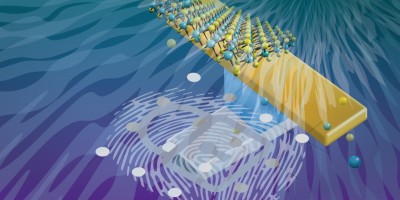Electronic waste, with printed circuit boards (PCBs) at its heart, is the fastest-growing category of hazardous solid waste in the world. New materials, in particular biobased materials, show great promise in solving some of the sustainability and toxicity problems associated with PCBs, although several challenges still prevent their practical application.
References
Awasthi, A. K., Li, J., Koh, L. & Ogunseitan, O. A. Circular economy and electronic waste. Nat. Electron. 2, 86–89 (2019).
Ogunseitan, O. A., Schoenung, J. M., Saphores, J.-D. M. & Shapiro, A. A. The electronics revolution: from e-wonderland to e-wasteland. Science 326, 670–671 (2009).
LaDou, J. Printed circuit board industry. Int. J. Hyg. Environ. Health 209, 211–219 (2006).
Ribeiro, P. P. M., dos Santos, I. D. & Dutra, A. J. B. Copper and metals concentration from printed circuit boards using a zig-zag classifier. J. Mater. Res. Technol. 8, 513–520 (2019).
Kosbar, L. L., Gelorme, J. D., Japp, R. M. & Fotorny, W. T. Introducing biobased materials into the electronics industry. J. Ind. Ecol. 4, 93–105 (2000).
Nassajfar, M. N., Deviatkin, I., Leminen, V. & Horttanainen, M. Alternative materials for printed circuit board production: an environmental perspective. Sustainability 13, 12126 (2021).
Bharath, K. N. et al. A novel approach for development of printed circuit board from biofiber based composites. Polym. Compos. 41, 4550–4558 (2020).
Lincoln, J. D., Shapiro, A. A., Earthman, J. C., Saphores, J. M. & Ogunseitan, O. A. Design and evaluation of bioepoxy-flax composites for printed circuit boards. IEEE Trans. Electron. Packaging Manuf. 31, 211–220 (2008).
Yung, W. K., Muthu, S. S. & Subramanian, K. in Environmental Carbon Footprints 365–431 (Butterworth-Heinemann, 2018).
Correa, J. P., Montalvo-Navarrete, J. M. & Hidalgo-Salazar, M. A. Carbon footprint considerations for biocomposite materials for sustainable products: a review. J. Clean. Prod. 208, 785–794 (2019).
Acknowledgements
The authors acknowledge support from Microsoft Research and the Lincoln Dynamic Foundation World Institute for Sustainable Development of Materials (WISDOM) at the University of California, Irvine. They thank A. Pistoia, Waste and Circular Economy Program Manager at Microsoft, for providing feedback on the draft version of this article.
Author information
Authors and Affiliations
Corresponding author
Ethics declarations
Competing interests
J.M.S. and spouse have equity interest in Microsoft Corporation. The relationship with Microsoft has been reviewed and approved by the University of California, in accordance with its conflict-of-interest policies. B.H.N., K.S. and K.F. are employees of Microsoft Corporation. O.A.O., J.L., E.S., H.H. and M.I. declare no competing interests.
Rights and permissions
About this article
Cite this article
Ogunseitan, O.A., Schoenung, J.M., Lincoln, J. et al. Biobased materials for sustainable printed circuit boards. Nat Rev Mater 7, 749–750 (2022). https://doi.org/10.1038/s41578-022-00485-2
Published:
Issue Date:
DOI: https://doi.org/10.1038/s41578-022-00485-2
- Springer Nature Limited
This article is cited by
-
Recyclable vitrimer-based printed circuit boards for sustainable electronics
Nature Sustainability (2024)
-
Advancements in Biodegradable Printed Circuit Boards: Review of Material Properties, Fabrication Methods, Applications and Challenges
International Journal of Precision Engineering and Manufacturing (2024)
-
Sustainability considerations for organic electronic products
Nature Materials (2023)


